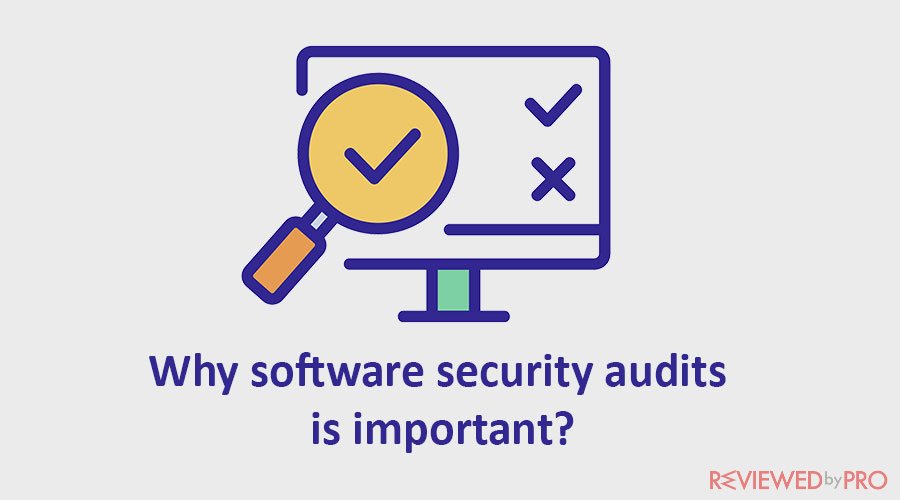
What is a software security audit?
A software security audit is a systematic evaluation of the security measures implemented in a software system. It involves a comprehensive examination of the software's architecture, code, configurations, and other relevant components to identify potential vulnerabilities, weaknesses, and security risks. The main objectives of a software security audit are:
Identify security vulnerabilities
Auditors analyze the software to uncover any potential security vulnerabilities that could be exploited by attackers. This includes examining the code for coding errors, logic flaws, input validation issues, authentication and authorization weaknesses, and other common security weaknesses.
Assess security controls
The audit evaluates the effectiveness of security controls and measures implemented within the software. This includes reviewing access controls, encryption mechanisms, secure coding practices, error handling, and other security-related features to determine their adequacy and compliance with security best practices.
Evaluate compliance
Audits assess whether the software complies with relevant security standards, regulations, and industry best practices. This can include adherence to specific security frameworks (e.g., ISO 27001) or compliance with industry-specific regulations (e.g., HIPAA for healthcare, PCI DSS for payment card industry).
Review security policies and procedures
The audit examines the organization's security policies and procedures related to the software system. This includes assessing how security requirements are defined, documented, communicated, and enforced throughout the development and maintenance lifecycle of the software.
Provide recommendations
Based on the findings of the audit, recommendations are provided to address identified vulnerabilities and improve the overall security posture of the software system. These recommendations may include implementing additional security controls, addressing coding issues, enhancing access controls, or improving security awareness and training programs.
Software security audits can be conducted internally by organizations' own security teams or externally by independent security consultants or auditing firms. The scope and depth of the audit can vary depending on the complexity and criticality of the software system.
Why software security audits is important?
Software security audits are important for several reasons:
-
Identify vulnerabilities: Security audits help identify vulnerabilities and weaknesses in software systems. They analyze the software code, architecture, and configurations to find potential security flaws that could be exploited by attackers. By uncovering these vulnerabilities, organizations can take necessary measures to mitigate the risks and enhance the overall security posture of their software.
-
Prevent breaches and attacks: A software security audit helps prevent breaches and attacks by proactively identifying and addressing security vulnerabilities. By understanding the weaknesses in the software, organizations can implement appropriate security controls and measures to protect against potential threats. This reduces the likelihood of successful attacks and minimizes the potential impact of security incidents.
-
Regulatory compliance: Many industries have specific regulations and standards that govern the security and privacy of software systems. Organizations may be legally required to conduct security audits to ensure compliance with these regulations. Regular audits help demonstrate due diligence in protecting sensitive data and meeting industry-specific security requirements.
-
Protect sensitive data: Software security audits play a crucial role in safeguarding sensitive data. Whether it's customer information, financial data, or intellectual property, a security breach can have severe consequences. Audits help identify vulnerabilities that could lead to data breaches and enable organizations to implement appropriate security controls to protect sensitive information.
-
Maintain customer trust: In an era of increasing cyber threats, customers have become more concerned about the security of the software they use. Conducting regular security audits demonstrates a commitment to ensuring the integrity and confidentiality of customer data. It helps build trust with customers, clients, and stakeholders, assuring them that their information is being handled securely.
-
Continuous improvement: Security audits provide an opportunity for organizations to continuously improve their software security practices. The findings and recommendations from audits can be used to enhance security policies, procedures, and development practices. By incorporating these improvements, organizations can strengthen their overall security posture and better defend against evolving threats.
Overall, software security audits are important for proactively identifying vulnerabilities, preventing breaches, ensuring compliance, protecting sensitive data, maintaining trust, and continuously improving security practices. They are a crucial component of a comprehensive security strategy for organizations that value the security and integrity of their software systems. A software security audit is a proactive measure to identify and address security weaknesses, ensure compliance with regulations, and enhance the overall security of software systems. It helps organizations protect against potential threats and maintain the integrity and confidentiality of their software and associated data.
How are security audits conducted?
Security audits are conducted through a systematic and structured process that involves several steps. While the exact approach may vary depending on the organization, the complexity of the software system, and the scope of the audit, here is a general outline of how security audits are conducted:
-
Define the scope: The first step is to clearly define the scope of the security audit. This involves determining the specific software systems, components, or processes that will be audited. The scope may include applications, infrastructure, databases, networks, and other relevant elements.
-
Establish audit objectives: The audit objectives are established to guide the audit process. These objectives outline what the audit aims to achieve, such as identifying vulnerabilities, assessing compliance, or evaluating security controls. Clear objectives help ensure that the audit stays focused and aligned with the organization's goals.
-
Plan the audit: The audit plan is developed to define the detailed approach, resources, and timelines for conducting the audit. This includes determining the audit methodology, tools to be used, and the team members involved. The plan also considers any legal or regulatory requirements, as well as the availability of necessary documentation and access to the software systems.
-
Gather information: The auditors gather relevant information about the software system under audit. This includes reviewing documentation, such as system specifications, architecture diagrams, security policies, and procedures. They may also interview key stakeholders, system administrators, and developers to gain insights into the system's security controls and practices.
-
Conduct vulnerability assessments: Vulnerability assessments are performed to identify potential security weaknesses in the software system. This involves using automated tools, manual code reviews, and penetration testing techniques to discover vulnerabilities such as insecure configurations, coding errors, or other common security issues.
-
Assess compliance: If the audit includes compliance assessment, the auditors evaluate whether the software system meets relevant security standards, regulations, and industry best practices. This may involve comparing the system against specific security frameworks, conducting gap analyses, and reviewing documentation for evidence of compliance.
-
Analyze findings: The auditors analyze the collected information, vulnerability assessment results, and compliance evaluations to identify areas of concern and potential risks. They evaluate the severity and impact of identified vulnerabilities and prioritize them based on the level of risk they pose to the organization.
-
Prepare audit report: The audit findings, including identified vulnerabilities, compliance gaps, and recommendations, are documented in an audit report. The report provides a comprehensive overview of the audit results, along with actionable recommendations for improving the security of the software system. It may also include a summary of the audit process, methodologies used, and any limitations encountered during the audit.
-
Present findings and recommendations: The audit report is typically presented to the relevant stakeholders, including management, IT teams, and developers. The auditors communicate the findings, explain the risks associated with identified vulnerabilities, and provide guidance on implementing the recommended security measures.
-
Follow-up and remediation: After the audit, organizations should prioritize and address the identified vulnerabilities and implement the recommended security measures. This involves remediation efforts, such as fixing coding errors, implementing additional security controls, updating policies and procedures, and conducting security awareness training for employees.
It's important to note that security audits are an ongoing process, and organizations may choose to conduct regular audits to ensure continuous improvement and maintenance of the software system's security posture.




